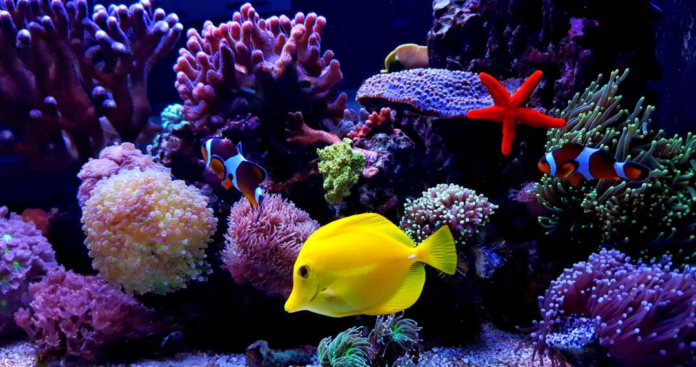(Newser) – Millions of saltwater fish of all shades and shapes are caught in Indonesia and other countries every year to fill ever more elaborate aquariums in living rooms, waiting rooms, and restaurants around the world. “It’s just so much fun to just watch the antics between different varieties of fish,” Rhode Island fish enthusiast Jack Siravo tells the AP. But the long journey from places like Bali to places like Rhode Island is perilous for the fish and for the reefs they come from. Some are captured using squirts of cyanide to stun them. Many die along the way. And even when they are captured carefully, experts say the global demand for these fish is contributing to the degradation of delicate coral ecosystems, especially in major export countries such as Indonesia and the Philippines.
There have been efforts to reduce some of the most destructive practices, such as cyanide fishing, in which fishermen crush the blue or white pellets into a bottle filled with water, creating a poisonous mixture fishermen squirt onto coral reefs, where fish usually hide in crevices. The fish become temporarily stunned, allowing fishermen to easily pick or scoop them from the coral. Many die in transit, weakened by the cyanide, which means even more fish need to be captured to meet demand. The chemicals damage the living coral and make it more difficult for new coral to grow.
The trade is extraordinarily difficult to regulate and track as it stretches from small-scale fishermen in tropical seaside villages through local middlemen, export warehouses, international trade hubs, and finally to pet stores in the US, China, Europe, and elsewhere. “There’s no enforcement, no management, no data collection,” said Gayatri Reksodihardjo-Lilley, founder of LINI, a Bali-based nonprofit for the conservation and management of coastal marine resources. “Consumers often don’t know where their fish are coming from, and they don’t know how they are collected,” said Andrew Rhyne, a marine biology professor at Roger Williams University.
Most ornamental saltwater fish species are caught in the wild because breeding them in captivity can be expensive, difficult, and often impossible. The conditions they need to reproduce are extremely particular and poorly understood, even by scientists and expert breeders who have been trying for years. Small-scale collection and export of saltwater aquarium fish began in Sri Lanka in the 1930s and the trade has grown steadily since. Nearly 3 million homes in the US keep saltwater fish as pets, according to a 2021-2022 American Pet Products Association survey. (Freshwater aquariums are far more common because freshwater fish are generally cheaper and easier to breed and care for.) About 7.6 million saltwater fish are imported into the US every year. (Read the full story for much more on the efforts to train fishermen in less harmful techniques.)




